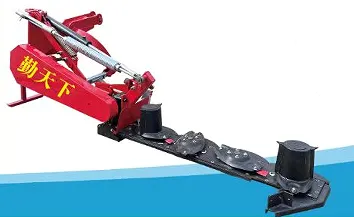maize harvester
The Evolution and Impact of Maize Harvesters
Maize, commonly known as corn, is one of the most significant crops grown worldwide. Its versatility and high yield make it a staple for food, feed, and biofuel. As the demand for maize continues to rise, so does the need for efficient harvesting methods. This need has led to the evolution of maize harvesters, machines that have dramatically transformed the agricultural landscape.
Historically, maize was harvested by hand, a labor-intensive process that required significant human resources. Farmers would manually cut the stalks, gather the cobs, and shell the kernels, a method that, while effective for small-scale farming, could not meet the burgeoning demands of larger agricultural operations. As the world population grew and industrial agriculture emerged, the traditional methods became increasingly unsustainable. This is where the innovation of maize harvesters came into play.
The development of mechanical harvesting equipment began in the early 20th century, with the introduction of the first combine harvesters designed for multiple crops, including maize. The advent of specialized maize harvesters, however, marked a significant turning point in agricultural efficiency. These machines are equipped with unique features such as adjustable header heights, row crop capability, and high-capacity grain tanks, allowing farmers to harvest more corn in less time.
Modern maize harvesters are not just faster but are also becoming smarter. The integration of technology into these machines has revolutionized the way maize is harvested. GPS technology, for example, enables farmers to map their fields accurately, leading to more efficient harvesting patterns. Additionally, sensors can monitor crop conditions in real time, helping farmers make informed decisions about when to harvest for optimal yield and quality.
maize harvester

Moreover, advancements in precision agriculture have led to the development of maize harvesters that can adapt to varying field conditions. These machines can adjust their operation based on factors such as moisture content and plant density, ensuring maximum efficiency and minimal waste. The result is not only a more efficient harvesting process but also a reduction in the ecological footprint of maize production.
The impact of maize harvesters extends beyond mere efficiency; they also influence the economic viability of farming operations. By enabling faster and more effective harvesting, farmers can reduce labor costs and increase their yields, leading to improved profitability. This is particularly important in regions where maize is a primary crop, as it helps farmers sustain their livelihoods and contribute to the local economy.
While the benefits of maize harvesters are clear, it is essential to recognize the challenges they also bring. The initial investment in this technology can be substantial, posing a barrier for smallholder farmers. Additionally, there is a growing concern about the environmental impacts of mechanized farming, including soil compaction and the potential loss of biodiversity. As such, the agricultural community is tasked with finding a balance between technological advancement and sustainable practices.
In conclusion, maize harvesters have played a pivotal role in transforming maize production from traditional methods to sophisticated, efficient operations. As technology continues to advance, the future of maize harvesting looks promising, offering potential solutions to meet global food demands while addressing environmental concerns. The continued innovation and adoption of these machines will be crucial in shaping the future of agriculture in an increasingly complex world.
Latest news
-
When to Upgrade Your Old Forage HarvesterNewsJun.05,2025
-
One Forage Harvester for All Your NeedsNewsJun.05,2025
-
Mastering the Grass Reaper MachineNewsJun.05,2025
-
How Small Farms Make Full Use of Wheat ReaperNewsJun.05,2025
-
Harvesting Wheat the Easy Way: Use a Mini Tractor ReaperNewsJun.05,2025
-
Growing Demand for the Mini Tractor Reaper in AsiaNewsJun.05,2025







